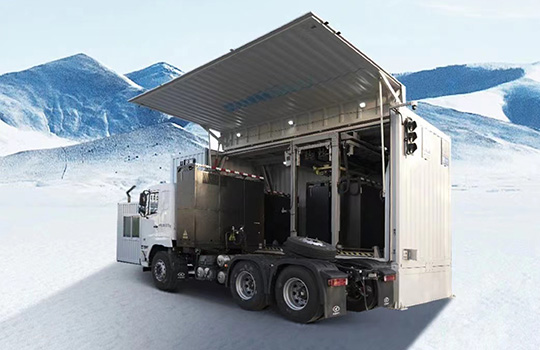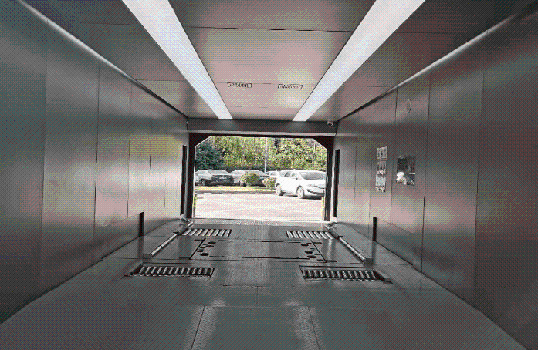In recent years, the term “battery container” has been gaining prominence in the energy sector, particularly as the world shifts toward renewable energy sources. But what exactly is a battery container, and why is it becoming increasingly important? This article delves into the details of it, exploring its design, functionality, applications, and benefits.
Understanding Battery Container
It is a large-scale energy storage system housed within a shipping container. These batteries are designed to store and discharge large amounts of electricity, often generated from renewable sources such as solar or wind. The term “battery container” specifically refers to the physical container, usually a standardized shipping container, that houses the battery cells and associated equipment.
The container typically contains multiple battery modules, inverters, cooling systems, and safety mechanisms. These systems can be deployed individually or combined to create massive energy storage solutions capable of stabilizing electrical grids, supporting renewable energy integration, and providing backup power in case of outages.

The Need for Battery Container
As the global energy landscape evolves, the need for efficient, scalable, and reliable energy storage solutions has become more pressing. The rise of renewable energy sources, while beneficial, introduces variability and intermittency into the power grid. Solar and wind power, for example, are not constant; they fluctuate based on weather conditions and time of day.
To address these challenges, they have emerged as a key solution. By storing excess energy generated during periods of high production, they can release stored energy when production is low, ensuring a consistent power supply. This ability to balance supply and demand is crucial for maintaining grid stability and optimizing the use of renewable energy.
Key Components of Battery Containers
- Battery Modules: The core of a battery container is its battery modules. These can be made from various chemistries, including lithium-ion, lead-acid, or more advanced technologies like solid-state batteries. The choice of battery chemistry depends on factors like cost, energy density, cycle life, and safety.
- Inverters: Inverters are essential components that convert the direct current (DC) stored in the batteries into alternating current (AC), which is used by most electrical grids and devices. Advanced inverters also manage the charging and discharging processes, ensuring optimal performance and longevity of the battery modules.
- Thermal Management Systems: Proper temperature control is critical for the safe and efficient operation of it. Cooling systems, often using air or liquid cooling, maintain the temperature within an optimal range, preventing overheating and prolonging battery life.
- Safety Mechanisms: Safety is a paramount concern in it. These systems are equipped with fire suppression systems, ventilation controls, and safety monitoring equipment to detect and mitigate potential hazards like thermal runaway, short circuits, or overcharging.
- Control Systems: The operation of a battery container is managed by sophisticated control systems that monitor performance, manage energy flows, and optimize the overall efficiency of the storage system. These systems can be integrated with grid management software to respond dynamically to changing energy demands.

Applications of Battery Containers
They are incredibly versatile and can be deployed in a wide range of applications:
- Grid Stabilization: One of the primary uses of it is grid stabilization. By storing energy during periods of low demand and releasing it during peak demand, these systems help to balance the load on the grid, reducing the need for peaking power plants and minimizing the risk of blackouts.
- Renewable Energy Integration: As more renewable energy sources are integrated into the grid, they play a crucial role in smoothing out the variability of solar and wind power. By storing excess energy generated during sunny or windy conditions, they ensure a steady supply even when conditions are less favorable.
- Microgrids and Off-Grid Solutions: They are ideal for microgrids and off-grid applications, providing reliable power in remote areas or during emergencies. They can be paired with renewable energy sources to create self-sufficient energy systems in locations without access to the main grid.
- Industrial and Commercial Use: Large industrial and commercial facilities can benefit from battery containers by using them for peak shaving—reducing energy costs by using stored energy during times of high electricity prices. They also provide backup power during outages, ensuring business continuity.
- Electric Vehicle (EV) Charging Stations: As the adoption of electric vehicles continues to grow, they are being deployed at EV charging stations to manage the high energy demands and reduce the strain on the grid. They can store energy during off-peak hours and provide rapid charging during peak times.
Advantages of Battery Container
- Scalability: They are highly scalable. Multiple containers can be connected to create energy storage systems of virtually any size, from a few megawatt-hours (MWh) to hundreds of megawatt-hours. This scalability makes them suitable for a wide range of applications, from small commercial installations to large grid-scale projects.
- Mobility: The use of standardized shipping containers allows for easy transportation and deployment of it. They can be moved to different locations as needed, providing flexibility in addressing changing energy storage requirements.
- Modularity: They are modular by design. Individual containers can be added, removed, or replaced without disrupting the entire system. This modularity simplifies maintenance and upgrades, ensuring that the storage system can evolve with changing technology and needs.
- Rapid Deployment: Because they are pre-fabricated and housed within shipping containers, they can be deployed quickly. This is particularly beneficial in emergency situations or when there is an urgent need for additional energy storage capacity.
- Cost-Effectiveness: While the initial investment in them can be significant, their long-term cost-effectiveness is undeniable. They reduce the need for expensive peaking power plants, lower energy costs through peak shaving, and provide a reliable backup power source, all of which contribute to long-term savings.
The Future of Battery Container
The future of battery containers looks promising as the demand for energy storage continues to grow. Advances in battery technology, such as the development of solid-state batteries and improved energy density, are likely to enhance their performance and reduce their costs. Additionally, as the global transition to renewable energy accelerates, they will play an increasingly vital role in ensuring a reliable, sustainable, and resilient energy system.
In conclusion, they represent a critical component of the modern energy landscape. Their ability to store and discharge large amounts of electricity in a flexible, scalable, and cost-effective manner makes them indispensable for grid stabilization, renewable energy integration, and various other applications. As technology continues to advance, they are poised to become even more essential in the quest for a sustainable and resilient energy future.
CIMC TLC|XLC|RYC is a leading manufacturer of battery containers and various other standard and special logistics equipment. With years of experience in the industry, it focuses on the design, production and distribution of high-quality innovative products that meet the specific needs of customers.
If you need high-quality and innovative logistics equipment, including refrigerated containers, cold chain equipment, containerized equipment integration, modular buildings, etc., CIMC TLC|XLC|RYC is your best choice. Welcome inquiries from customers all over the world and look forward to the opportunity to cooperate with you.


